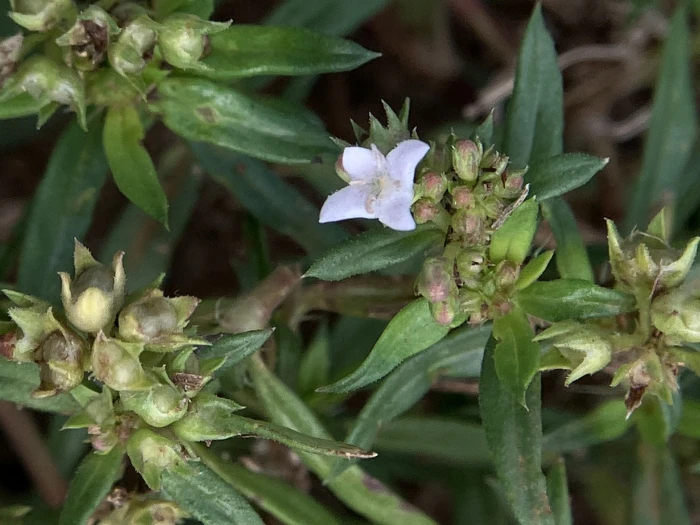Flat-Top Mille Graines
(Oldenlandia corymbosa)
Flat-Top Mille Graines (Oldenlandia corymbosa)
/
/

© Swarochi Tathagath
CC BY 4.0
Image By:
© Swarochi Tathagath
Recorded By:
Copyright:
CC BY 4.0
Copyright Notice:
Photo by: © Swarochi Tathagath | License Type: CC BY 4.0 | License URL: http://creativecommons.org/licenses/by/4.0/ | Uploader: odonut | Publisher: iNaturalist |























Estimated Native Range
Climate Requirements for Brownsville, Texas
| This Plant | Your Site | Plant Suitability for Your Location | ||
|---|---|---|---|---|
| • Precipitation | 2" - 210" | 27" | Your precipitation may be insufficient for this plant. Irrigate N" / year. | Irrigate N" / year |
| • High Temp. | 49°F - 109°F | 93°F | Your summer temperatures are normal for this plant. | Excellent |
| • Low Temp. | 13°F - 79°F | 50°F | Your winter temperatures are normal for this plant | Excellent |
This plant should grow well at your location with about N inches per year (Y minutes per month) of irrigation.
Summary
Oldenlandia corymbosa, commonly known as Flat-Top Mille Graines or Old World Diamond-flower, is an annual herb that is native to tropical and subtropical regions of Africa. It is typically found in wet grasslands, along roadsides, in wastelands, and in rice paddies, where it thrives in moist conditions. This plant usually grows to a height and width of 0.5-1 feet (0.15-0.3 meters), forming a low, spreading mat. The flowers of Oldenlandia corymbosa are small, white, and not particularly showy, blooming in the summer months. The plant’s inconspicuous nature often leads to it being overlooked, despite its resilience.
Oldenlandia corymbosa is valued for its ability to grow in challenging conditions, including waterlogged soils and areas with poor drainage. It is often used in cultivation for erosion control or as a ground cover in wet areas. While it is not commonly grown for ornamental purposes, its adaptability makes it a useful plant in restoration projects or for filling in difficult spots in the landscape. It prefers full sun to part shade and can tolerate a range of soil types, including loam and clay, but it requires high amounts of water to thrive. There are no popular garden cultivars of this species, and it is generally free from serious pests and diseases. However, its ability to self-seed prolifically can make it potentially invasive in some regions outside its native range, so care should be taken to manage its spread.CC BY-SA 4.0
Oldenlandia corymbosa is valued for its ability to grow in challenging conditions, including waterlogged soils and areas with poor drainage. It is often used in cultivation for erosion control or as a ground cover in wet areas. While it is not commonly grown for ornamental purposes, its adaptability makes it a useful plant in restoration projects or for filling in difficult spots in the landscape. It prefers full sun to part shade and can tolerate a range of soil types, including loam and clay, but it requires high amounts of water to thrive. There are no popular garden cultivars of this species, and it is generally free from serious pests and diseases. However, its ability to self-seed prolifically can make it potentially invasive in some regions outside its native range, so care should be taken to manage its spread.CC BY-SA 4.0
Plant Description
- Plant Type:
- Height: 0.5-1 feet
- Width: 0.5-1 feet
- Growth Rate: Moderate
- Flower Color: White
- Flowering Season: Summer
- Leaf Retention:
Growth Requirements
- Sun: Full Sun, Part Shade
- Water: High
- Drainage: Medium, Slow
Common Uses
Low Maintenance, Potted Plant
Natural Habitat
Native to tropical and subtropical regions of Africa, often found in wet grasslands, roadsides, wastelands, and rice fields
Other Names
Common Names: Old World Diamond-flower
Scientific Names: Oldenlandia corymbosa , Gerontogea corymbosa , Hedyotis biflora var. corymbosa , Hedyotis burmanniana , Hedyotis corymbosa
GBIF Accepted Name: Oldenlandia corymbosa